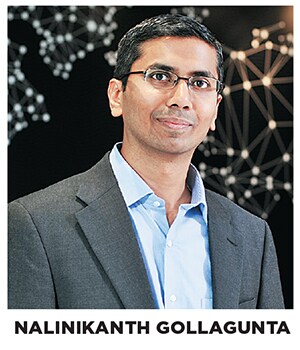Healthcare for all: Accelerating to a healthy future
The time has come for India to build a robust health care system with heavy infusion of technologies to ensure equitable access to all citizens


 Image: Shutterstock
Image: Shutterstock
But despite substantial progress in the past decade, India continues to contribute disproportionately to the global disease burden, especially in non-communicable ones. Access to health care is inadequate, quality of services varies considerably as regulatory standards are not defined and enforced, and affordability is a serious problem for most given that 70 percent of care is paid out-of-pocket.The government has launched a series of initiatives, including Ayushman Bharat, one of the biggest moves in India’s journey towards universal health care coverage. Here are a few targeted accelerators that can help us get there faster:
Bridge the gap with tech
Health care in India is characterised by limited resources servicing large needs. Digital solutions can address these gaps as they are asset-light and can easily be scaled up. They can overcome fundamental barriers to access, cost and quality, and help drive better clinical outcomes and customer experience. To meet the aspirations of Ayushman Bharat, strengthening our primary health care (PHC) infrastructure, skilling their workforce and digitally connecting them to tertiary centres will be critical. We should see the emergence of a Digital PHC to provide comprehensive care, essential drugs for free and diagnostic services. Our partnership with Tricog for cloud-connected ECG devices in under-served locations is helping detect heart complications at scale. Similarly, CritiNext—an eICU solution by Fortis in partnership with GE Healthcare—manages over 150 ICU beds, treating over 500 critical patients every month.
Leverage private sector
Reasonable health insurance coverage will trigger a steep rise in demand for tertiary infrastructure. As the largest and oldest health care public-private partnership (PPP) player in the country, we believe this can drive positive health outcomes at scale—PPPs in Assam, Andhra Pradesh, Rajasthan and West Bengal are testimony to that. The government must innovate similar PPP-based models to expand into maternal and infant care, oncology and cardiology.
undefinedIn health care, limited resources service large needs. Digital solutions can address these gaps[/bq]
Tech can leapfrog skill gaps
Artificial intelligence (AI) and machine learning (ML) are helping interpret diseases accurately and faster. Startups like Arterys have proven that AI and ML can augment the radiologist’s effectiveness in interpreting scans and eventually aid in task-shifting. With advances in wearable health devices, we should see a paradigm shift from ‘hospital-centric’ to ‘patient-centric’ models.
Skilling at scale
Mixing traditional methods with augmented reality (AR) and virtual reality (VR): Taking inspiration from the Skill India initiative, GE launched its Yogya Bharat Aarogya Bharat initiative in 2015. Having trained and placed thousands of students in health care institutions, we must now leverage advanced simulation and AR/VR tools to improve scalability of skilling programmes. Recent efforts such as Microsoft HoloLens have shown a lot of promise in this direction.
It’s time for India to build a robust health care system with heavy infusion of technologies. If implemented properly, in the next 10 to 15 years, people in Shahpara will stand a chance to get the same level of care as delivered in Bengaluru. That is the future we should aspire for.
(The writer is president and CEO, GE Healthcare, South Asia)
First Published: Sep 12, 2018, 11:02
Subscribe Now